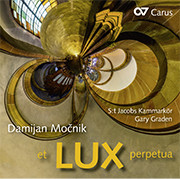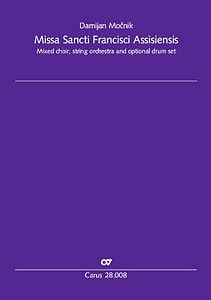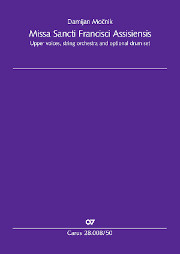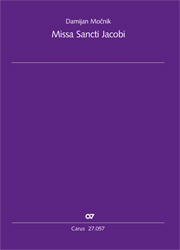Voluptuous Melodies and Richly Colored Harmonies
Choosing a favorite piece naturally presents an exciting challenge for any music lover interested in different genres. This Mass setting fascinated Lorenz Adamer from the first time he heard it, particularly because of Mocnik’s individual approach, his fine motivic writing, and the intricacy of the work…
Choosing a favorite piece naturally presents an exciting challenge for any music lover interested in different genres. You want to share as many works as possible and of course not reduce these to just one favorite piece. I have chosen the newly-released CD with compositions by Damijan Mo?nik, and in particular his Missa Sancti Francisci Assisiensis.
Francis of Assisi, the famous merchant’s son and later founder of a religious order, has served as a source of inspiration from the most varied perspectives, and Damijan Mocnik has added to this tradition. The Slovenian composer and choral director composed a cantata in 2013 on the 25th anniversary of the Diocesan Grammar School in Ljubljana, based on the text of the famous Canticle of the Sun, and building on this, a complete setting of the ordinary of the mass as well (2014-16).
This Mass setting fascinated me from the first time I heard it, particularly because of Mocnik’s individual approach, his fine motivic writing, and the intricacy of the work. For example, it is interesting that the Et incarnatus est is motivically linked with the Agnus Dei, thus forming a musical bridge for the attentive listener. It is also astonishing that this Mass composition offers so many different starting points: after a mysterious and percussive opening, the Kyrie has a beautiful lyrical character, very contemplative in effect, and shows what was probably understood by the ‘harmony of the spheres’ in both classical antiquity and the medieval period. The Gloria and Credo form a brilliant contrast to this: the choral parts in the Gloria are developed with captivating rhythms and urgent string accompaniment, and in the Credo soloistic percussive elements alternate with fine choral and string melodies. I also particularly like the Benedictus. This does not have the usual lyrical character, but a dance rhythm verging on the lively, and sounds very mystical and mysterious. We are definitely not dealing with a dusty mass composition here, but with musical vitality!
In this recording it is not only Damijan Mocnik’s compositional intricacy which impressed me, but also the successful contribution to the recording by all the performers involved: the urgent rhythms of the percussionists, the majestic sound of St Jacobs Kammarkör, and the blended string ensemble of the Royal College of Music Stockholm combine to produce an exceptional sound experience which grips and impresses in the most convincing way. For anyone who wants to hear Damijan Mocnik’s settings of the Missa St. Jacobi, Geburts-Nacht and …et lux perpetua alongside his Missa Sancti Francisci Assiensis, this CD can be most warmly recommended.
Lorenz Adamer studied musicology and philosophy at the universities of Vienna (Austria), Cremona/Pavia (Italy) and Tübingen. In his spare time he is a keen clarinettist, and sings in a choir. He has worked at Carus-Verlag since summer 2017 in the Sales Department.








Leave a Reply
Want to join the discussion?Feel free to contribute!